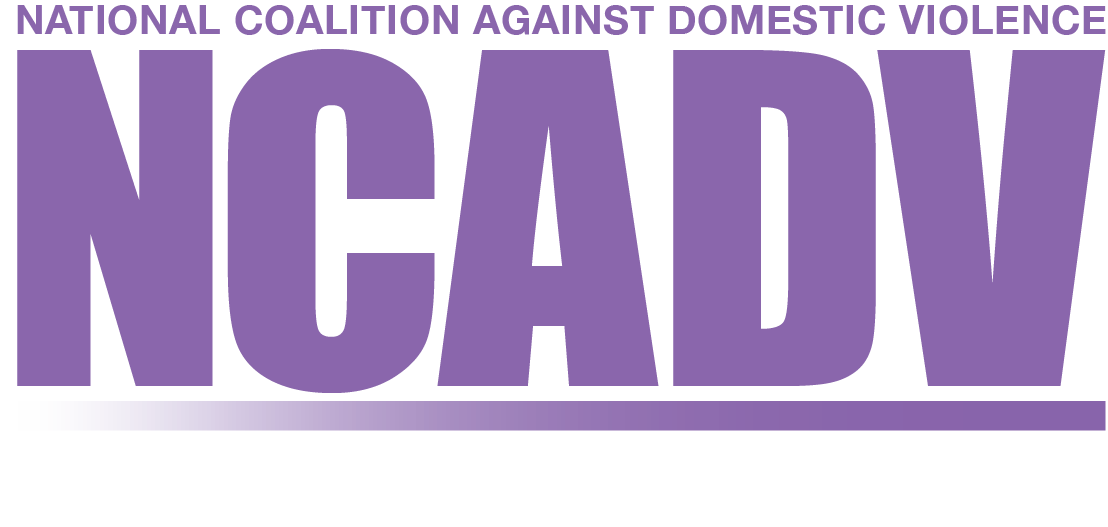Domestic Violence
Introduction to Domestic and Intimate Partner Violence

Domestic Violence: A Comprehensive Overview
Domestic violence and Intimate Partner Violence (IPV) are serious social issues that impact both individuals and families. These crimes transcend race, age, gender, and socioeconomic status. Understanding how to seek help, deal with the impact of such violence, and address the problem safely and anonymously is a crucial step to creating safer communities for all citizens, especially survivors.
According to the National Coalition Against Domestic Violence (NCADV), nearly 20 people per minute are physically abused by an intimate partner in the United States. This equates to more than 10 million women and men each year. The far-reaching consequences of domestic violence affect not only the victims but also their families, friends, and communities. It can lead to severe physical injuries, mental health issues such as depression and anxiety, and even fatalities. The economic impact is also significant, with billions of dollars spent annually on medical and mental health services, lost productivity, and legal costs (NCADV, 2023).
Understanding Different Types of Domestic and Intimate Partner Violence
The Centers for Disease Control (CDC) defines four types of IPV in their National Intimate Partner and Sexual Violence (NIPSV) Survey: contact sexual violence, physical violence, stalking, and psychological aggression (CDC 2022). Crucially, not all of these crimes involve explicit acts of violence. Among both men and women, over 45% of the population report experiencing psychological aggression by an intimate partner at some point in their lives (CDC 2022). Emotional violence is a key aspect of domestic and intimate partner violence that the victim may not recognize as a crime. Still, non-violent IPV can cause emotional trauma on par with physical assaults (Ross 2018).
Consequences and Outcomes of Domestic Violence
Domestic violence and IPV can leave victims and families with profound physical, psychological, and emotional wounds. In women, as many as half of victims who experience severe abuse also show symptoms of depression, and nearly one in four experience PTSD (Ross 2018). The path from these outcomes and suicidal ideation is clear (PTSD Research Quarterly 2017). While any single cause of suicidal ideation is impossible to specify, the relationship between domestic abuse, IPV, and suicide is apparent.
Identifying the Root Causes of Intimate Partner Violence
If you are a victim of domestic violence or IPV, it is not your fault. Women in intact relationships are less likely to be victims. than those who have separated from their abusers (Ross 2018). Similarly, the type of relationship (dating, common-law marriage, traditional marriage, etc.) can also impact rates of abuse. These trends do not mean that a victim should stay with their abuser. It speaks to the difficulty and danger of escaping abuse.
The National Institutes of Health (NIH) identifies additional causal factors, including education status, age, economic status, community attitude toward (and justification of) IPV, and place of residence (Gunarathne et al., 2023).
No matter where you or your loved one falls on any demographic spectrum, if you need support to escape an abusive relationship, reach out to the National Domestic Violence Hotline.

Demographic Insights on Domestic and Intimate Partner Violence
No victim is alone. Whatever age, gender identity, sexual orientation, or race makes a victim who they are, there are many just like them who are working through recovery. In the US, nearly 40% of women and 30% of men have experienced some type of intimate partner violence (Ross 2018). More broadly, the World Health Organization estimates that 35% of people worldwide have already experienced intimate partner violence (WHO 2024).
Moreover, all ages are at risk, from infanticide to elder abuse, spousal abuse to stalking. Both men and women are potential targets of intimate partner violence, with LGBTQ+ people being at particular risk. According to the CDC NIPSV 2010 Survey, as many as 75% of bisexual women have experienced sexual violence, alongside 47% of bisexual men, 46% of lesbian women, and 40% of gay men (CDC 2010).
Women in particular are at greater risk of domestic violence or IPV in areas of greater socioeconomic disadvantage. In such areas, households that experience additional individual-level economic disadvantages are even more likely to experience domestic violence (Ross 2018).
The racial breakdown of victims is also not uniform, although no racial identity is immune to violence. Among men, lifetime rates of IPV range from 25% among Asian men and 58% among Black men. Among women, that range becomes as low as 27% among Asian women and 64% among multiracial women (CDC 2022).
Recognizing the Forms of Intimate Partner Violence
This violence can take many forms. In the most severe cases, the abuse is obvious; the abuser may use a weapon, fists, or choke. However, some physical abuse may not be seen as abuse by either the victim or abuser (CDC 2022). Pushing, shoving, or slapping, even without long-term pain or injury, are forms of violence that are frequently used to intimidate a victim. In the United States, 39% of both women and men have experienced abuse by slapping, pushing, or shoving (CDC 2022).
Psychological aggression is even more common. In the US, 49% of women and 45% of men will experience some form of psychological aggression by an intimate partner (CDC 2022). Such aggression, while not explicitly physical, is very much a form of violence. Sometimes, abusers don't use psychological aggression to coerce control over their victim; they simply insult, humiliate, or belittle a victim in front of others. However, more often, abusers use their aggression to control their victims. This coercive type of psychological aggression could include threats of physical harm to their victim or themselves, purposeful isolation from family or friends, or destroying an item of sentimental value to the victim (CDC 2022). As many as 46% of US women and 43% of US men have experienced some form of coercive psychological control (CDC 2022).
Strategies for Preventing Domestic and Intimate Partner Violence
Traditionally, with both domestic violence/IPV and other crimes, we rely on some kind of law enforcement response. However, communal response may be required for crimes that are isolated in the home (Ross 2018). Friends, family, neighbors, and bystanders have roles to play in uprooting deeply hidden domestic violence and IPV issues in their community. Public health measures have gifted us a methodology for dealing with communal crises with an emphasis on prevention that could prove effective in combating domestic violence/IPV (Ross 2018).
If we view abuse as a disease, we can take preemptive measures to prevent "infection" before it occurs. For some diseases, we practice prevention by washing our hands, wearing masks in public, getting vaccinated, or social distancing. In treating a domestic violence epidemic, community education may serve to immunize some families against the threat (Ross 2018).
Once a disease is contracted, a swift medical response is necessary to prevent escalation into more severe symptoms. Child Protective Services (CPS) acts as this swift response once abuse has begun (Ross 2018). Because over 30% of households suffering from domestic violence have children under 18 residing in them (CDC 2022), and nearly one in four domestic violence cases have child witnesses in court (DOJ 2009), such responses are often necessary even if the child is not the one being directly abused.
Finally, if a disease has been left to fester for a longer term, we have rehabilitation, long-term care, and medication regimens to see a patient through recovery. In domestic violence/IPV cases, family preservation services, parent mentor/support groups, and mental health services for children and adults alike serve to help victims and families navigate the long road to recovery (Ross 2018).
Digital Control: Recognizing Technology's Involvement in Domestic Abuse
Examining How Technology Affects Domestic Violence
Technology has become a key component of our life in today's era. While there are many advantages to take into account, it is crucial to recognize that there is also a chance that this could end up being abused, especially when it comes to domestic violence. The mechanics of domestic violence are already complex, but abusers are using technology more and more to deceive, induce fear, and assert control over their victims. It is essential to have a firm understanding of these strategies to provide victims with the support and safety they deserve.
Examining the Domain of Social Media Monitoring
Sadly, social media platforms—which were once intended to facilitate connections—have evolved into tools that allow abusers to monitor and control their victims. Fraudsters frequently use fictitious personas to follow their victims carefully, monitor their online activity, and gather private information. These platforms frequently disparage or publicly humiliate their victims, further severing their connections to support systems (Smith, 2019; Emerald Insight).

GPS Monitoring
The development of GPS technology has resulted in both advantages and disadvantages. Unfortunately, one of the drawbacks is that it has made it possible for abusers to track their victims' whereabouts in real time. Abusers can use GPS-enabled devices like AirTags and other smart trackers hidden in cars or personal possessions or covertly install tracking apps on their victims' cell phones. The victim's freedom is severely restricted by constant surveillance, which instills a pervasive sense of fear Emerald Insight (Oxford University Press (OUP)) (Tanczer et al., 2018).

Discovering the Realm of Spyware and Digital Espionage
Spyware is another dangerous tool at the abusers' disposal. The abuser can secretly monitor emails, texts, browsing history, and even phone conversations by installing this software on the victim's devices. Keylogging software can record each keystroke in great detail, revealing passwords and other sensitive private information. People who have had their privacy experience a deep sense of violation and helplessness (Ybarra et al., 2017; Emerald Insight; crisis-house).
Education and Awareness
Awareness and education are two important elements that greatly influence our society. By disseminating information and fostering understanding, we can enable people to make decisions and take action. People can receive the skills they need to successfully navigate the challenges of the outside world and make valuable contributions to their communities. This, in turn, brings significant issues to light.
The first line of defense against digital abuse is to increase awareness of it. People who have experienced harassment and/or monitoring online must be aware of the risks and warning signs associated with these activities, as should their advocates. Organizations must provide extensive resources that draw attention to the possible exploitation of technology and offer helpful advice on protecting digital privacy (Woodlock, 2017; Emerald Insight; Oxford Academic).
Tips for Securing Your Devices and Online Accounts
Victims can take several precautions to protect their devices and online accounts. For enhanced security, it's critical to reset passwords regularly. Adding two-factor authentication can also offer an additional degree of security. People should periodically check their devices for unexpected programs or settings and be aware of their personal information when accessing the Internet.
Using Anti-Virus Software to Prevent Harmful Malware
Installing trustworthy antivirus and anti-spyware programs can help identify and eliminate harmful software from devices. People must frequently inspect their devices to maintain their security. It is best to seek professional help if spyware is suspected because these programs can be difficult to remove.

Hotlines and Support Services
Many organizations offer critical support to people who have been subjected to digital abuse. Supported by the NCADV, the National Domestic Violence Hotline offers victims confidential support, advice, and helpful information on digital safety. Severe intimate partner abuse affects 1 in 4 women and 1 in 9 men, according to NCADV. These concerning statistics emphasize the urgency of services that are easily accessible and needed to assist individuals who are impacted. Local shelters for victims of domestic abuse provide a wealth of information and are staffed by experts who are well-versed in the intricate details of digital abuse. They provide individuals in need with individualized help and support.
Legal Protections
Individuals and organizations depend on legal protections to protect their rights and interests. These safety measures act as a barrier against possible damage, offering comfort and a plan of action in case of legal difficulties. Legal safeguards contribute to the upkeep of justice and order by creating a framework of rules and regulations.
People who have suffered injustice must comprehend their rights under the law. Many jurisdictions have passed laws that particularly address the problem of cyberstalking and digital harassment. Documenting incidents of abuse and quickly reporting them to the authorities can greatly aid in securing protection orders and pursuing legal action against abusers (Thomasen, 2018; Emerald Insight; Crisis-House; MDPI).
References
- Smith, J. (2019). ‘When I saw women being attacked, it made me want to stand up and fight’: Reporting, responding to, and resisting online misogyny. In K. Lumsden & E. Harmer (Eds.), Online othering: Exploring digital violence and discrimination on the Web (pp. 287–308). Cham: Palgrave Macmillan.
- Tanczer, L., Lopez Neira, I., Parkin, S., Patel, T., & George, D. (2018). Gender and IoT research report: The rise of the Internet of Things and implications for technology-facilitated abuse. London: STEaPP, PETRAS IoT Hub.
- Ybarra, M., Price-Feeney, M., Lenhart, A., & Zickuhr, K. (2017). Intimate partner digital abuse. Data & Society Research Institute. Centre for Innovative Public Health Research.
- Woodlock, D. (2017). The abuse of technology in domestic violence and stalking. Violence Against Women, 23(5), 584–602.
- Thomasen, K. (2018). Beyond airspace safety: A feminist perspective on drone privacy regulation. Canadian Journal of Law and Technology, 16(2), 307–338.
If you or someone you know is experiencing domestic abuse and needs help, please reach out to these resources. You are not alone; support is available to help you regain control and ensure your safety.




